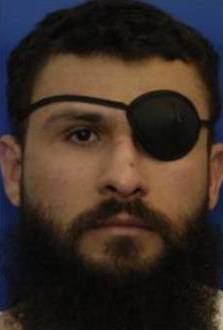First Time Guantanamo Bay Prisoner Details His Abuse in Damning Report

All Global Research articles can be read in 51 languages by activating the Translate Website button below the author’s name.
To receive Global Research’s Daily Newsletter (selected articles), click here.
Click the share button above to email/forward this article to your friends and colleagues. Follow us on Instagram and Twitter and subscribe to our Telegram Channel. Feel free to repost and share widely Global Research articles.
***
In an explosive report covered by The Guardian today[1], and a first for a current Guantanamo Bay prisoner, Abu Zubaydah has revealed detailed information on his abuse and torture at the hands of the CIA during his imprisonment and interrogation at US black sites and Guantanamo Bay.
The report, titled American Torturers: FBI and CIA Abuses at Dark Sites and Guantanamo and authored by the Centre for Policy and Research, provides an unprecedented insight into the CIA’s experimentation of savage torture methods, known as Enhanced Interrogation Techniques (EITs), on Abu Zubaydah.
Key to the report are previously unseen horrific drawings produced by Abu Zubaydah that reveal the brutality of the CIA’s so-called Enhanced Interrogation Techniques. The detailed drawings depict the various torture methods used by the CIA against Abu Zubaydah and other detainees. Through his harrowing account, the complicity of the FBI in the torture and mistreatment of detainees is also revealed. Abu Zubaydah is known to be the first detainee to have been experimented on by the CIA’s EITs which included humiliation slaps and punches to his body, waterboarding, direction of high pressure cold water on his genitals, and the 24 hour use of loudspeakers and cold air whilst he was shackled to his cell wall.
Abu Zubaydah, a stateless Palestinian, was kidnapped by US forces in Faisalabad, Pakistan in 2002. During the raid on his house, he was shot multiple times and severely wounded. Shortly after his capture, Abu Zubaydah was flown to Thailand where he would be held at a CIA black site. He was the first prisoner to be taken into the CIA detention programme following the declaration of the War on Terror and became the subject of the CIA’s discussion on how to bypass prohibitions on interrogation techniques to allow various modes of torture.
Over the course of 4 years, Abu Zubaydah would be transferred to and tortured at numerous CIA black sites from Afghanistan to Lithuania, and Poland to Morocco before being transferred to the US military at Guantanamo Bay in 2006. Despite the acknowledgement of the CIA and FBI that the detention and rendition of Abu Zubaydah was a case of mistaken identity and he was in fact not a member of Al Qaedah he continues to be regarded as a ‘forever prisoner’, detained at Guantanamo Bay without charge or trial.
Abu Zubaydah’s prolonged detainment at Guantanamo Bay has been heavily criticised by the UN Working Group on Arbitrary Detention (UWGAD) as having no lawful basis. The international body warned that the withholding of prisoners’ freedoms “constitute crimes against humanity” and has called for immediate release. The UNWGAD also declared that the UK was “jointly responsible for the torture and cruel, inhumane or degrading treatment of Mr Zubaydah” during his detention of more than 2 decades [2]. To date he has been compensated by the governments of Lithuania, Romania and Poland for their complicity in his illegal abuse and torture.
Authors of the report Professor Mark Denbeaux and Dr Jess Ghannam said:
“Not only are these drawings a powerful testament to what the CIA and FBI did in the wake of 9/11, they are the only evidence now. The CIA destroyed the only video evidence of detainee torture, and “justice” moves at a glacial pace in the Guantanamo Bay, Military Commission courtroom; 19 years have been wasted while Mr. Abu Zubaydah and many other GTMO prisoners have neither been charged with a crime, nor allowed to testify.”
Moazzam Begg, Former Guantanamo Bay prisoner and CAGE outreach director said:
“They call him the “forever prisoner” because, despite facing no charge or trial in 21 years, they fear to release Abu Zubaydah not because of what he did but because what was done to him. In truth, it will be forever remembered that USA’s 21st century medieval torture programme was invented against a stateless Palestinian and it was his case that caused the United Nations to finally describe Guantanamo as a ‘crime against humanity. Abu Zubaydah is innocent according to the law so he must be released. And when he’s free, his iconic self-portraits of CIA torture featured in the report will have done their job.”
*
Note to readers: Please click the share button above. Follow us on Instagram and Twitter and subscribe to our Telegram Channel. Feel free to repost and share widely Global Research articles.
Notes
[1] The Guardian: ‘The forever prisoner’: Abu Zubaydah’s drawings expose the US’s depraved torture policy.
[2] Human Rights Council: Report.
Featured image: Abu Zubaydah is a citizen of the Palestinian territories held in Guantanamo Bay. (Licensed under the Public Domain)

